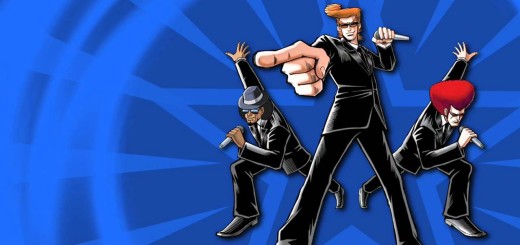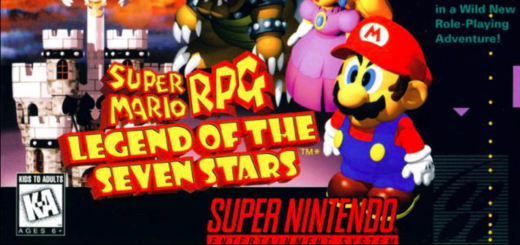Classic Callback: DEAD RISING
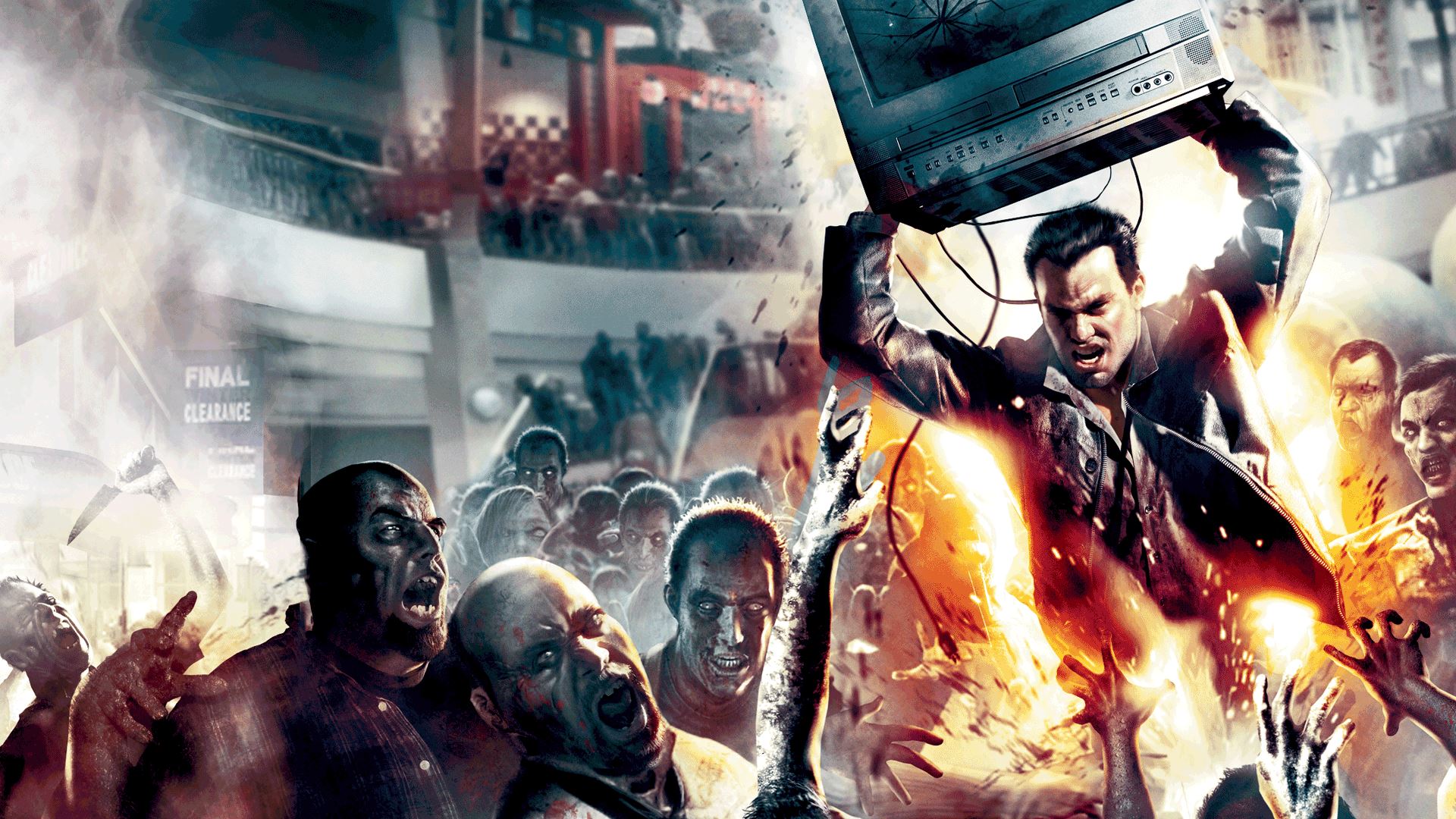
Zombies will never leave us. They’re too perfect of a construct to abandon in any form of storytelling. Game developers in particular realize this, and think in the only fair way forward: How else can we kill them? In its original 1978 release, George Romero’s DAWN OF THE DEAD envisioned the ingenious scenario of zombies in a mall, loaded with as much satire as it is blood. Socio-philosophical ideals aside, the possibilities of zombie action in a shopping mall feel endless, especially with an improvisation-inclined mind at the ready to turn anything into a weapon. This is a mindset gamers rarely got to inhabit, wherein they could do damn near whatever they’d like, until the early to mid-2000s with the proliferation of open world games. As for zombies, their presence in games was either heavily arcade-based in action titles, or super dreadful and indomitable in horror. In a mainstream sense, gamer engagement with the undead didn’t become as intimate or chaotic as it is now until the release of Capcom’s DEAD RISING.
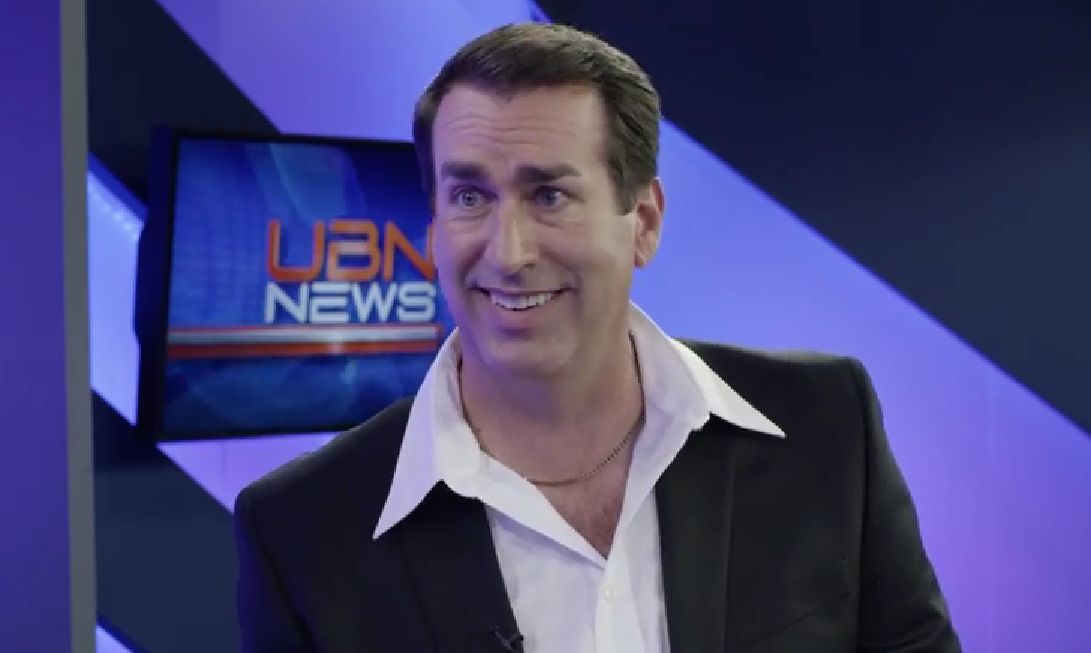
All you really need to know is that Rob Riggle stars in the Crackle adaptation
Frank West is a storied wartime photographer. He’s seen it all, and wants to see it all, the sleazy bastard (if this was an 80s film, he’d be played by Kurt Russell). Our story begins with a mysterious viral outbreak in Willamette, Colorado. Frank helicopters himself in to get a closer look, and captures the (exciting) horrors of a city gone mad; people being torn to shreds, cars and buildings exploding, and survivors running for their lives. He touches down on top of the Parkview Mall, and tells his pilot to come back for him while he checks out the situation on foot. And like that, the player takes control of Frank as he enters the mall. Survivors desperately barricade the entrance, all while Frank photographs them like some sort of self-imposed hero. Everything seems to be going well… until an old woman destroys the barricade in an effort to save her little dog from the undead. All hell breaks loose, and the mall is FLOODED with zombies, with survivors scattered around the various plazas and stores. Save people, take photos, mow down oceans of the undead using whatever, follow a government conspiracy, kill psychopaths; the world is Frank/the player’s oyster, and what a bizarre one it is.
Despite the wild premise and what the gameplay entails, DEAD RISING’s trajectory corkscrewed into being an immediate cult classic, as opposed to skyrocketing to major acceptance and love. It’s an awkward, quirky, stupid game as addicting as it is frustrating. Gamers who stuck around did almost out of stubbornness, because deep past the game’s oddball features and functions, it has the potential to be an absolute blast. And more often than not, it is. As a case study in absolutely peculiar gameplay, it’s one that, with enough distance, can easily be looked back upon with fondness for its pros and cons, of which there are certainly plenty.
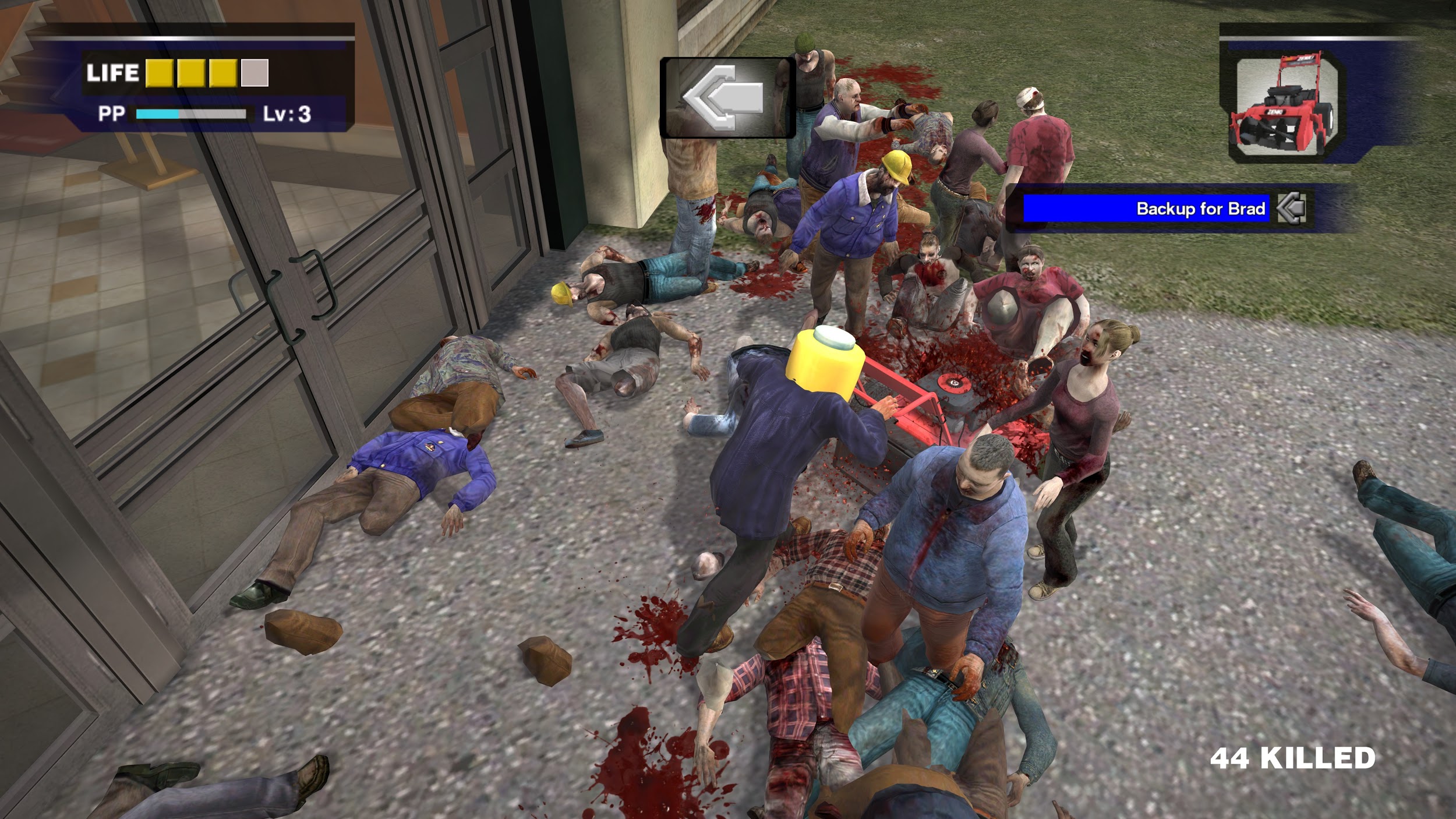
A perfectly fitting substitute for therapy
DEAD RISING’s main attractor was, and still is, its base gameplay; at the time of the original’s release, it felt like a miracle. Capcom stocked a whole mall with any kind of store one could imagine, each housing potential weapons, health, tools, or even clothing; everything has kill capability. Everything from guns and blades to hardware and sports equipment, down to toys and furniture were available at a moment’s notice. With all the other gory possibilities (and the developers made sure that the more esoteric weapon choices had even more… unique murder uses), heavy duty stock like guns seemed like a less satisfying last resort.
The game never encouraged the strategy of stocking up on items, as everything has ammo or a breaking point, and things get so hectic so quickly that the best laid plans are practically thrown out the window as soon the zombies start swarming. It’s often annoying and maybe discouraging, but the immediacy of the action kept players in check; as a thrill, it explodes from the subconscious into spontaneous tension-turned-enjoyment. Plus, finally taken away from the tank-controlled stress of the Resident Evil series, to be this flexible around hoards of the undead (which flexed impressive numbers for how many could be on-screen at once) practically matches the knee-jerk reaction any gamer gets from a well-timed jump scare. To escape death, players literally had to button-mash, but without the artificiality of quicktime events.
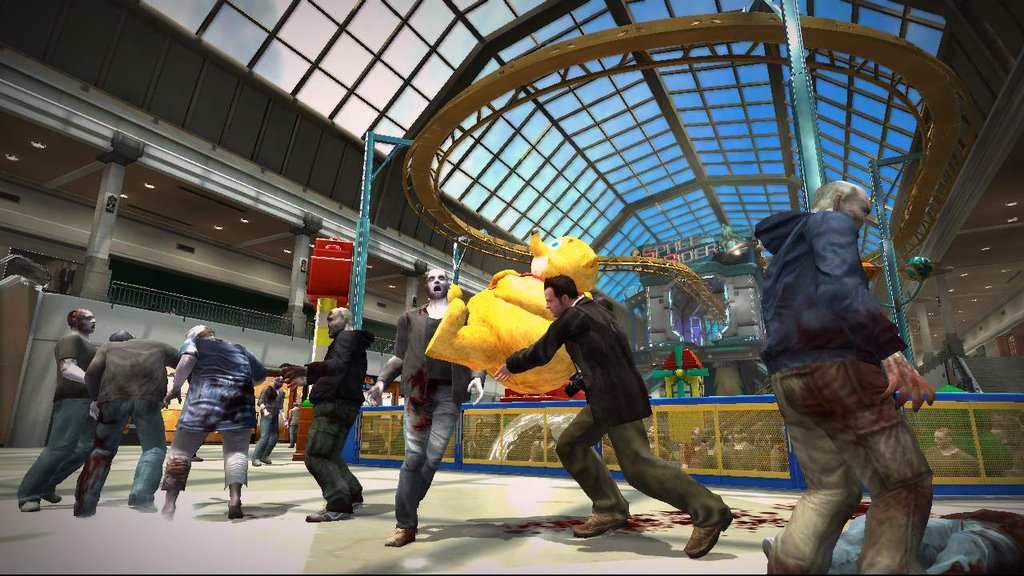
Because that would break the immersion…
DEAD RISING feels like a harbinger to stuff like the SAINTS ROW franchise, equipping loose action gameplay with RPG mechanics and an open world. This was new to the zombie subgenre, and brought a whole mess of insanity once only dreamed of. Outside of fun with weapons, the player can level up Frank, though in addition to elevating his stats and expanding his inventory, Frank also learns more physical fight moves to help traverse and clear crowds of enemies. Getting to pull a Double Lariat (fists out, Christ-like, spinning like a helicopter), knee/leg drops, disembowelments (satisfying), let alone being able to run on top of zombies, really makes the process that much more enjoyable, as well as easier to traverse. The game takes on a brawler element, combining these moves with the robust roster of melee weapons.
Perhaps the first sign of DEAD RISING’s specific brand of outlandishness comes in the form of a side game: Frank’s photography. At any point, the player can bring up and see the world through Frank’s DSLR, and snap a photo. There’s a zoom capability, and Frank can slowly move around in this mode, as the player looks for particularly showy moments to capture. These are rated by certain tags: drama, comedy, and even… erotica (zombie cleavage, folks… Can’t get classier than this). These earn Frank “prestige points,” which feed directly into the RPG systems. It’s literally as if Frank is becoming stronger and smarter because of an ego boost, earned by one particularly solid snapshot. “PP” is also earned from killing certain amounts of zombies and completing missions, but nothing can beat the satisfaction that even the player can feel from taking a perfectly pointed photo.
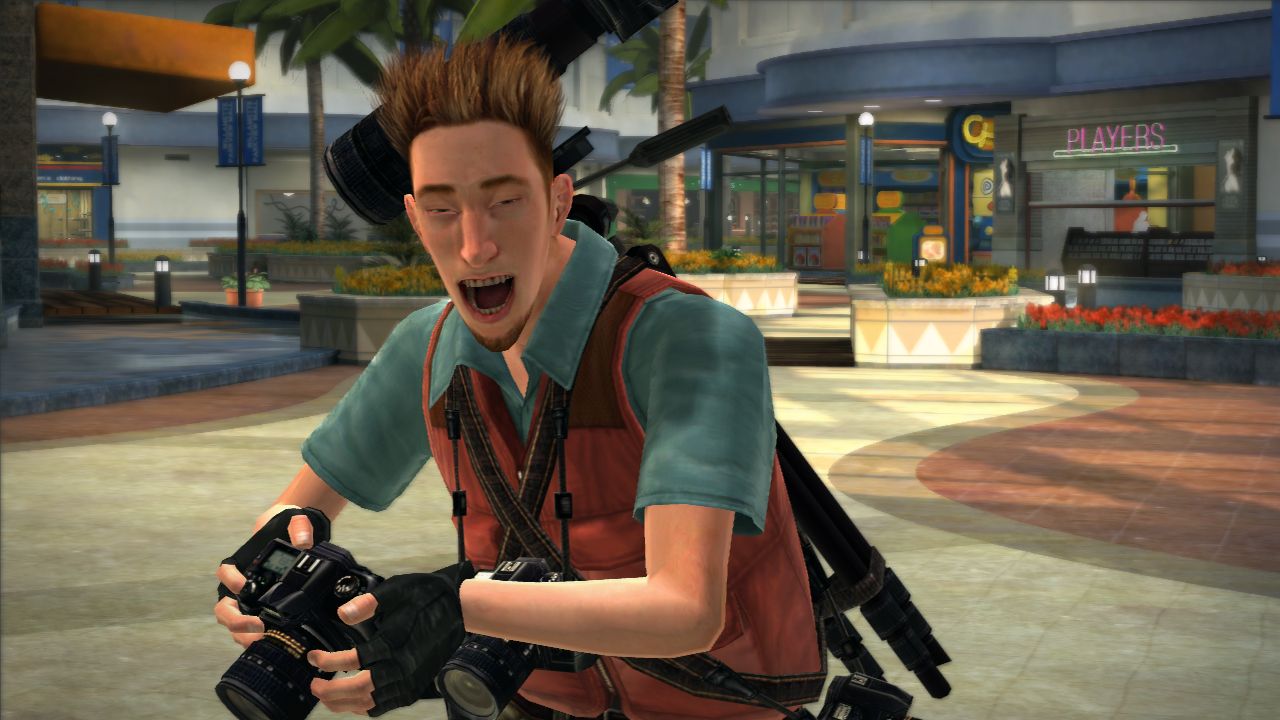
Okay, maybe not THAT satisfied
Outside of zombie survival and destruction (and photography), DEAD RISING had players participating in a handful of other tasks, woven within each other in terms of importance. Frank works on a timer, awaiting his helicopter pick up 72 hours after the start of the game, but only in addition to more core game components. Frank and several other survivors, including two FBI agents and a kindly janitor named Otis, have set up shop in a rooftop security office that no zombies can reach. Therefore, it’s the perfect place to bring survivors found around the mall. So, while out and about, Otis would ring Frank on the walkie talkie (over and over and over again… and over-), notifying him of nearby survivors holed up in shops or in mysterious situations.
These calls spawned side missions that could range from a quick rescue to a whole mall-spanning, multi-layered effort that ends in a battle with a “Psychopath,” all of which function as the game’s bosses. Sometimes, these missions have to be picked up a day later at a different location, occasionally at a time that’s a little too close to a main game mission that is a NECESSITY to complete, with consequences if they’re ignored. To top it all off, the save system harkens back to Capcom’s RESIDENT EVIL physical save spots (in this case, bathrooms). With the added effort of physically bringing saved survivors THROUGH the mall and to the roof (which varies in difficulty depending on their location), DEAD RISING became notorious for being so peculiarly intimidating and complicated in a way that became synonymous with the DARK SOULS series, deceptively complex despite straightforward presentation.
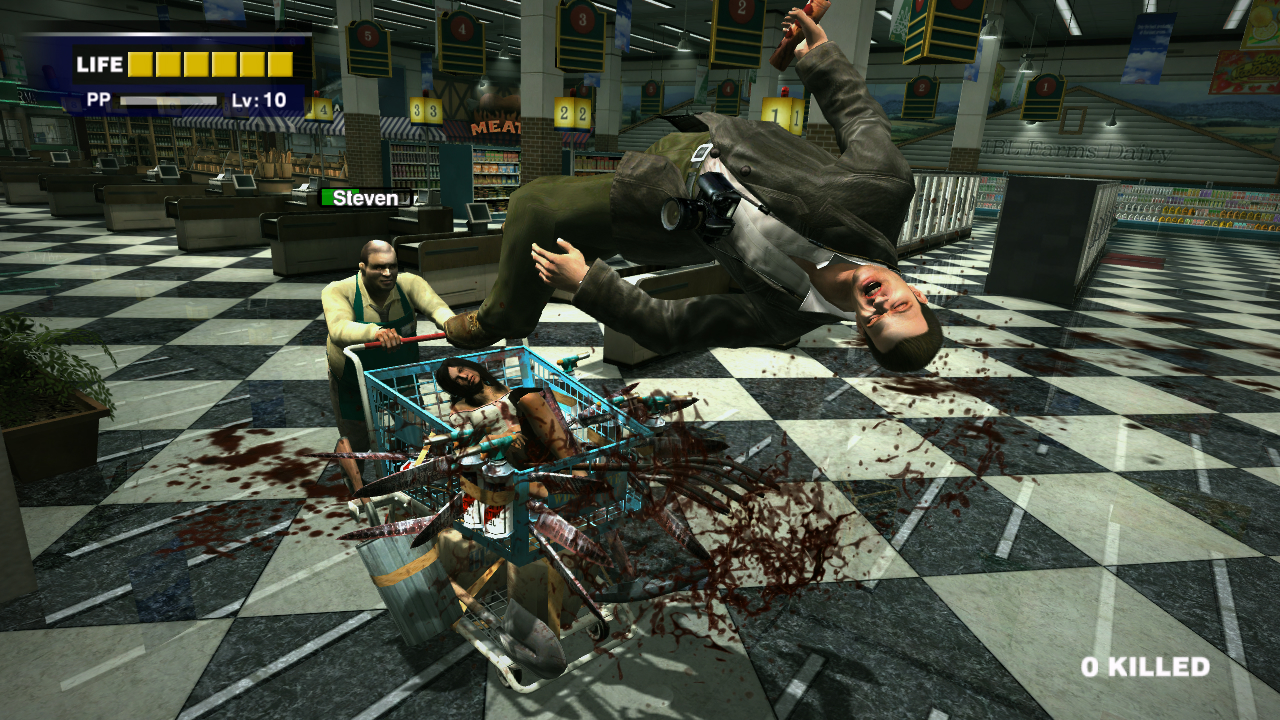
Rap metal plays in the background of this battle. It’s incredible
DEAD RISING is relentless, and the zombies practically fill the role of an “obstacle” more so than the primary target. It becomes more efficient to run past, or on top of, crowds of zombies to get to the next mission. At night, however, the zombies’ biology flips a switch, becoming so much more aggressive than their initial state of a creeping doom. They turn into 28 DAYS LATER-style runners and form bigger crowds. It’s hair-raising to circumvent these kinds of gaggles, as they are much more grabby and are deadlier to boot.
Speaking of aspects that can get so infuriating that you’ll need to take a break, there’s the Psychopath battles. Like normal boss battles, they have patterns that are readable and beatable, but happen so quickly and remorselessly that it takes several breathers to think straight in tackling. Plus, and this happened often, after beating a boss once, sometimes, inexplicably so, THEY COME BACK. One “classic” battle takes place in the middle of the mall’s park, where three convicts are driving around in a jeep with a machine gun on the back. The broodingly stupid guitar riff of “Gone Guru” by the band Lifeseeker is queued upon entrance, creating an even deeper sense of dread than John Williams’ JAWS theme as the jeep careens toward the player at DOOM level speeds, to the point where simply trying to avoid the prisoners is a Herculean task. Even if you do beat them, they’ll respawn the next day! It’s as if the game was made just broken enough to be hysterical, if that didn’t mean having to actually play through these systems.
But at least you get some sick jamz to die to
And yet, almost impossibly so, DEAD RISING’s quality is balanced out by its genuine positives. For starters, despite the ironic comedy drawn out by its kooky aspects, the game is actually very funny. It’s bubblegum ridiculousness from head to toe. It has the power cord-heavy soundtrack of a TONY HAWK’S PRO SKATER game, and there’s almost as many Capcom easter eggs as there are zombies. Save a survivor from “Jill’s Sandwiches,” wear a Servbot headpiece, and even get Megaman’s power blaster. It’s not necessarily a slapstick game, but let’s just say that Hideo Kojima would’ve been right at home working on this game. The characters, survivors, and Psychopaths especially are astounding and outlandish. Overweight security officers, murderous nature photographers, crazed grocery store owners with bladed shopping carts, PTSD-stricken hardware store owners, and a DUAL CHAINSAW WIELDING CLOWN are just the tip of the iceberg when it comes to DEAD RISING’s cast. Plus, Frank as a protagonist is perfectly goofy with one-liners and a smart-ass attitude. It’s a roster of personalities that, despite being nigh on impossible to fight, feels classic upon impact. It’s worth it to look back at the game’s overall schlocky fun streak; it might instill some trauma, but equally so, it might re-instill a desire to return to the mall.
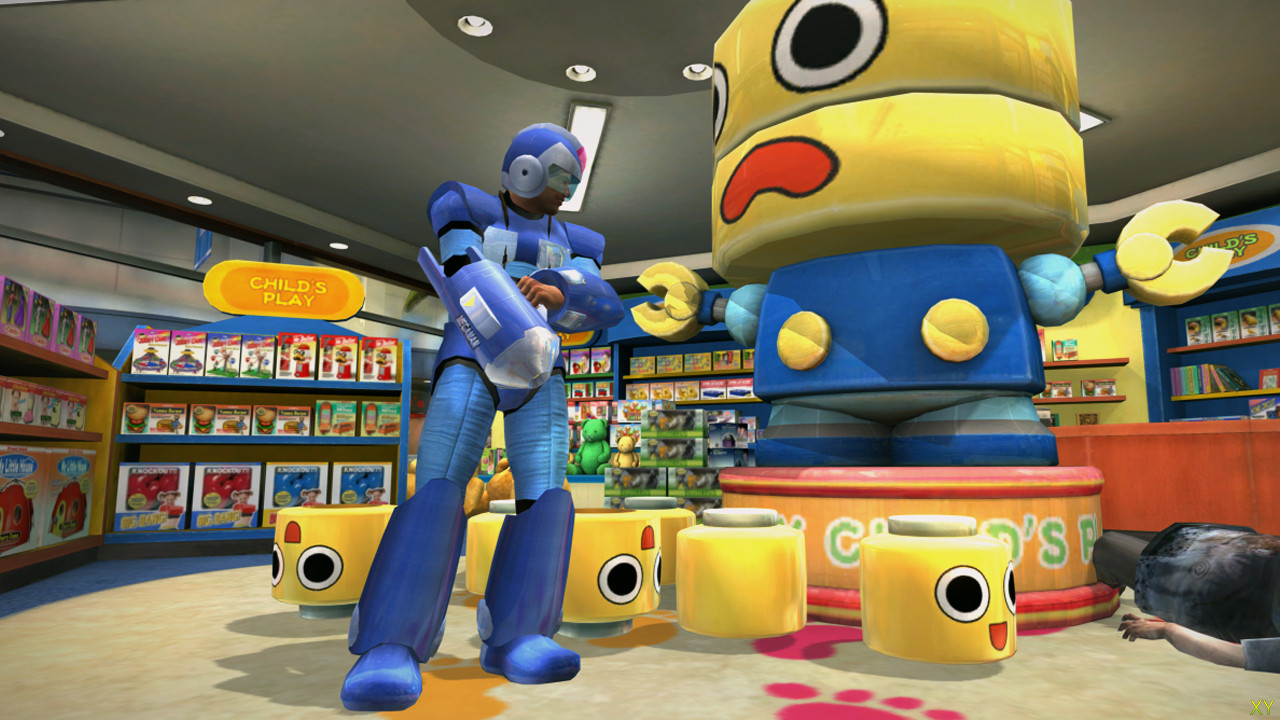
That thousand yard stare…
Capcom released this weird baby at almost the perfect time, at the peak of the achievements frenzy, and the developers actually designed some funny and audacious goals to reach for points. Escorting seven survivors at once and killing a million zombies were at the top of a hill that was encouraged to be climbed over and over again. Yes, simply killing zombies was a blast; in fact, DEAD RISING’s demo was arguably even more of a classic than the game itself. But something had gamers coming back. The story structure, though thoroughly confused as far as timing goes, is highly flexible and practically designed toward restarting over and over again. Level-ups that carried over between playthroughs made gameplay much more exciting and vibrant. Players eventually gained a GROUNDHOG DAY-like awareness to all of the game’s scenarios and details; where certain weapons were, where to find shortcuts, and even what glitches can be relied upon. Players can just go through the motions, and weirdly gain some pleasure from being able to breeze through what was once seemingly an impossibility. Sure, multiple endings attracted somewhat of a curiosity, but Capcom managing to pack in just enough toys in a perfectly sized sandbox saved the game from being a disappointment, and instead turned it into a curious enigma.
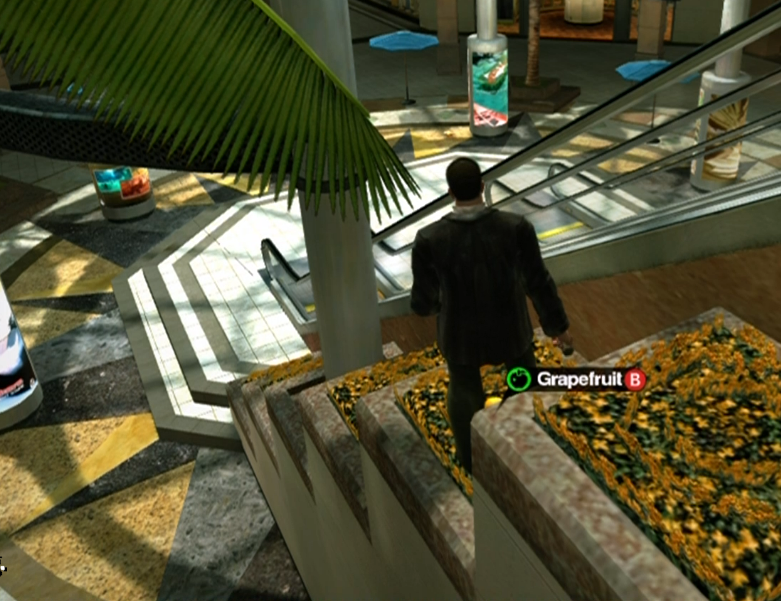
There’s always a lighthouse, there’s always a grapefruit on the escalator
Source: Screenshot
DEAD RISING is a game of POSSIBILITY, with an odd and complex structure. It’s like the developers dared players to come back to a maze with electrified walls for some of the best cheese out there. It’s release was perfectly timed to open gamer eyes to the potential of open worlds, right in the wake of games as a medium entering an uncertain future. There’s a purity to DEAD RISING’s singularity as a game and package. It’s good for arcade purposes, but also holds within it a treasure trove of RPG elements and comic horror. It’ll probably continue to go down in video game history for its jagged edges, but the response they garner is so close to the game’s genuinely clever efforts in writing, styling, and overall way of existing, that they only further add to the mystique. For whatever reason a player was jumping out of their chair, screaming and button-mashing their controller to death, DEAD RISING made a memorable and lasting impression.
DEAD RISING is available on Xbox 360, PlayStation 4, Xbox One, and PC


